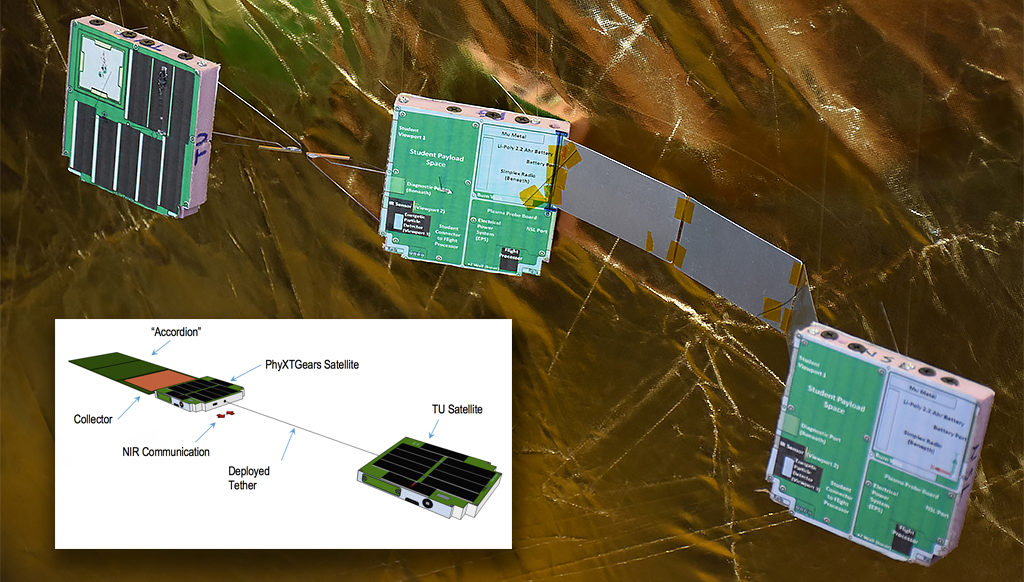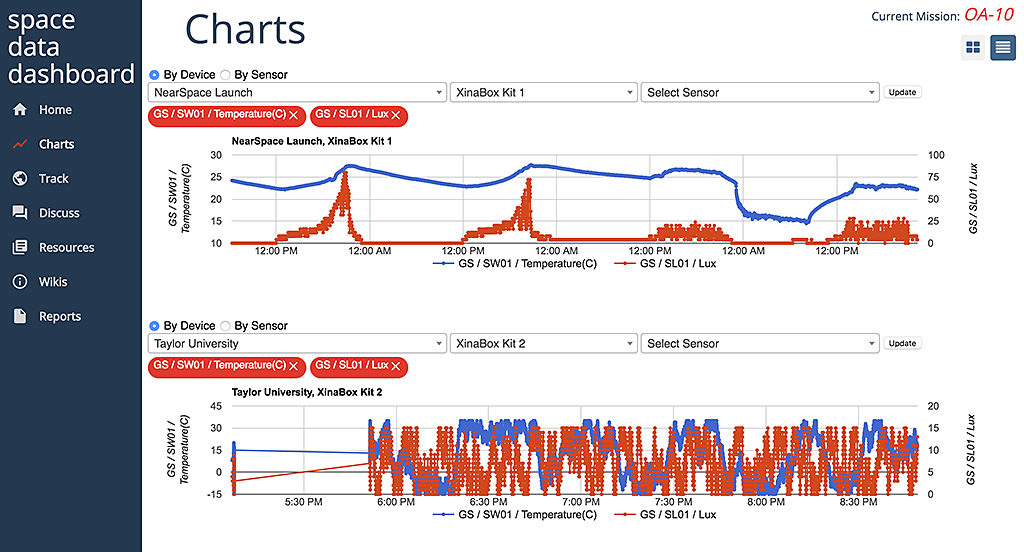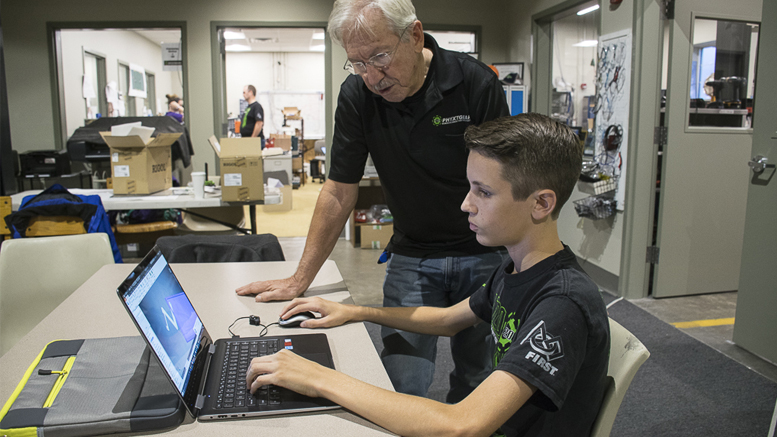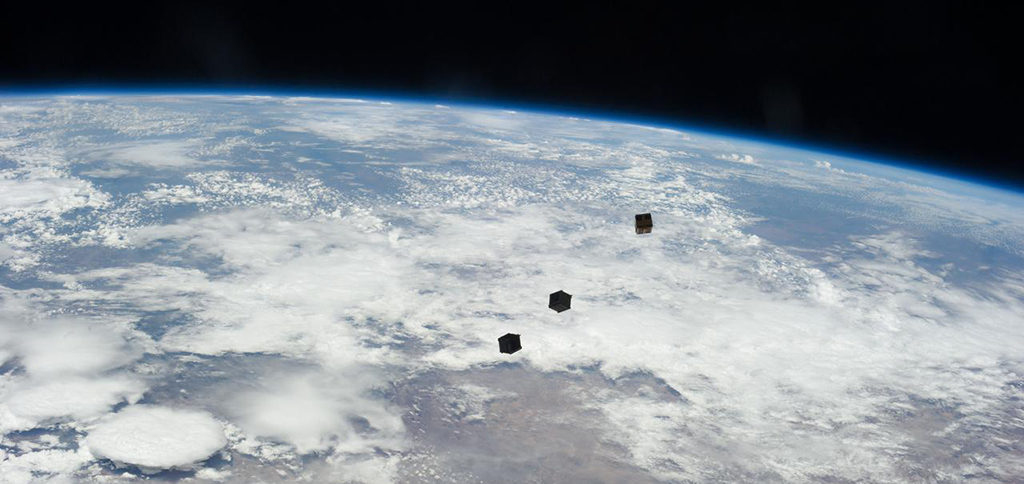By: Mike Rhodes—
Muncie, IN—When I was a 1960s kid, the most scientific thing I ever accomplished was launching an Estes Model Rocket about 1500 feet in the air with a payload consisting of one raw egg. If the model rocket landed without breaking the egg—well, that was cause for celebration. And worthy of a mention in the Boy Scout Troop #150 monthly newsletter in Gauley Bridge, WV.
Fast forward to 2017 and you’ll find scientific experiments have really changed for kids interested in science and technology. Now, students are planning for, and launching, actual satellites into low earth orbit for educational purposes.
Among other projects, student members of the Muncie-Delaware First Robotics Team (also known as PhyxtGears,) are preparing for the launch of their own nano-satellite into the ionosphere. The satellite, also known as a ThinSAT, is expected to be launched in the Fall of 2018.
On any given Tuesday or Thursday evening, on the second floor of MadJax in Muncie, you’ll find a number of local students working on technology projects. Students work and learn out of the PhyxtGears 7,000 square ft. operations center on the second floor of MadJax—having moved about a year ago from a 2,000 square foot facility located inside of the old Morrison Mock school.
According to Shawn Van Ness, president/mentor of PhyxtGears, students from 6 counties are involved with the robotics program. “Our robotics program encompasses many areas that are not being taught in school. Like shop classes and things like that. We are almost like a small company, in the sense that we have a mechanical side, electrical, programming, a woodshop, a media documentation team, as well as an animation sub-team among others.”

ThinSAT’s measuring 111.1 x 111.1 x 12.5 are pictured. This photo shows the beta units the students are designing. The satellites (one belonging to PhxtGears and one belonging to Taylor University) are linked together with a tethering deployment system and contain an optical communications system and peripherals. Photo by: Mike Rhodes
Satellite Program Partners
According to Stefan Brandle, Ph.D., professor of computer science and engineering at Taylor University, satellites have been getting smaller and smaller. “Technology has changed and dramatically improved, so what used to be required in terms of BIG electronics has been reduced to tiny little things we call nano-satellites, cube satellites, pico-satellites or in this case, ThinSATs. These new satellites for educational use have a very tiny footprint.”
Virginia Space, in partnership with Twiggs Space Lab, Orbital ATK, and the NASA Wallops Flight Facility, has created a low cost, short term program that is designed for student engagement and students who have an interest in Science, Technology, Engineering, and Mathematics (STEM) related fields. The program’s goals are achieved by using the ThinSAT, a small satellite capable of transmitting data from low earth orbit. (About 120-180 miles into space from ground level.)
The ThinSAT Program sets a new standard for STEM related academics in the space industry. Students from middle school to the university level develop satellite hardware, test sensor components with low and high altitude balloon flights, analyze data, and launch an actual payload into space.
Why ThinSAT Projects Are Important
Many of NASA’s engineers are currently eligible for retirement, so the next generation coming up through the ranks has a lot to learn before the knowledge of those leaving walk out the door. With their low cost, risk, and visibility, small satellites offer an excellent training opportunity for hands-on learning. Small satellite missions also offer young, prospective engineers the opportunity to acquire and practice essential engineering management skills such as team communication and project documentation. Plus, it is incredibly fun for the students!
Learn about tiny satellites in the video above.
The satellite PhyxtGears is working on is about the size of a piece of toast, but inside there’s a lot of technology going on including: An Infrared Communications System with a transmitter/receiver capable of transmitting signals over a distance of 10 meters; a student designed payload space that will deploy 10 meters of .012 inch wire to act as a tether between satellites; a High Dynamic Range Digital Sensor for measuring light levels; as well as a camera module to photograph the PhyxtGears satellite from a distance of 10 meters away; plus, an electronic field sensor that will have the ability to measure an electric field in outer space.
The electronics package will also include a webserver that will transmit data back to Earth. These digital files can then be imported into a space data website dashboard, allowing the students to view and monitor data from the satellite on their individual computer screens inside PhyxtGears.

An example of the space data website dashboard where students will be able to view graphical data from the ThinSAT. Image courtesy of Stefan Brandle, Ph.D.
The Major Goal of the Mission: The Phantom Loop
According to Mike Koch, vice president and mentor for PhyxtGears, the main goal of the mission is to determine whether or not an electrical current can be run through a single wire in outer space. The experiment will be a reference for the entire scientific community. To do that, a PHANTOM LOOP system will be used. A phantom loop uses a wire for one of the legs of the circuit and the ionosphere will act as the second leg of the circuit. The ionosphere is full of “free electrons” and electron motion is actually the DNA of electricity.
“On the Taylor University satellite, we’re going to have a filament, just like you’d see inside a light bulb…and it will glow in outer space,” said Mike. When the filament glows, it gives off electrons. 10 meters away on the PhyxtGears satellite, we are going to try to pull free electrons IN…the idea is to get the electrons to flow through the wire. We are hoping to obtain 2 or 3 milliamps of current, which is a very small amount. If we can do that, the amount of current would be sufficient to obtain scientific gain(s) from the experiment. The actual knowledge that we CAN do it…and then later, to actually use the electricity generated from running current through that one wire, is something we hope to accomplish.
The PhyxtGears satellite will travel 176,000 kilometers an hour and will orbit the Earth one time every hour. After about 7 days, the satellite will slowly fall from its low orbit and burn out.
Hardly similar to my Estes rocket project back in the 60s. But this time there won’t be any broken eggs!
If you are a parent and would like more information on getting your child involved with the Muncie-Delaware FIRST Robotics Team, visit their website below.
ph: 765-203-1720
email: phyxtgears@gmail.com




